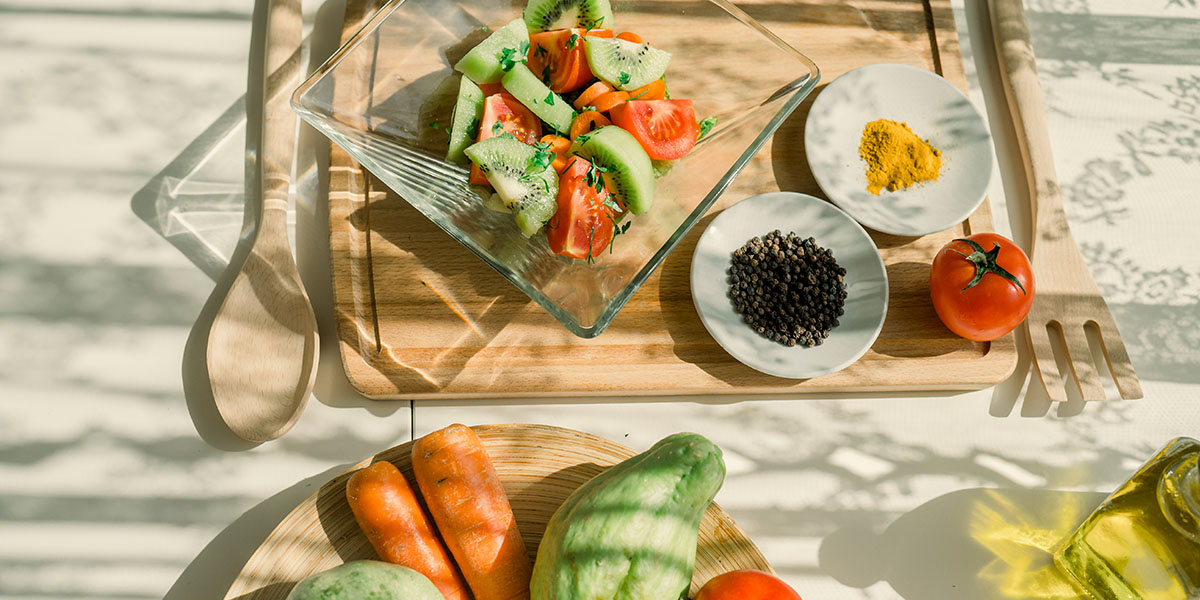Vowing to eat better this year? Some of the most common nutrition resolutions aren’t easy to keep. Here are 3 to skip, and how to replace them.
4 things you might not know about probiotics
From kimchi to kombucha: Clearing up the confusion about fermentation and “good” bacteria.

Thanks to the rising popularity of probiotics, we’re now more aware than ever that not all bacteria is bad. In fact, some bacteria are good for you. Falling in the friendly category: probiotics, which are live bacteria or yeast that, when taken in sufficient amounts, can help to maintain good health.
Mainstream understanding of probiotics links fermented foods like kimchi, miso and sauerkraut to health. But Natasha Haskey, registered dietitian and co-author of Gut Microbiota: Interactive Effects on Nutrition and Health, says that there are several misconceptions concerning probiotics:
1. It’s more than just a gut feeling.
There’s no doubt probiotics promotes intestinal (gut) health. Scientists working for the World Health Organization and the U.S. Food and Agriculture Organization have defined probiotics as: “ live microorganisms which when administered in adequate amounts confer a health benefit on the host.” These scientists have confirmed the benefits of probiotics for supporting gut health and for helping to prevent ailments such as diarrhea, irritable bowel syndrome, abdominal pain and bloating and ulcerative colitis.
According to Dr. Mary Ellen Sanders of the International Scientific Association of Probiotics and Prebiotics, probiotics can also be useful for reducing antibiotic-associated diarrhea, reducing crying time in colicky but otherwise healthy infants, reducing the incidence and duration of common upper respiratory tract infections and helping manage vaginal infections.
2. There are many types of probiotics and they work in different ways.
Probiotics often contain one or many strains of live microorganisms or microbes – a.k.a. bacteria – and each one may offer a different health effect. So, one strain doesn’t fit all your needs. “The probiotic you take needs to match the health benefit you’d like to achieve,” says Haskey.
There are more than 500 probiotic strains, but the most common ones are Lactobacillus and Bifidobacterium. “These have long been added to cultured dairy products such as yogurt and kefir,” Haskey says. “They’ve been known to help reduce the risk of cardiovascular disease, type 2 diabetes and obesity.”
The amount you take also matters. “The dosage needed varies widely and is dependent on the strain and health benefit you’re trying to achieve,” Haskey adds. If you’re looking for a specific health benefit, Haskey recommends asking a pharmacist for guidance or browsing through a probiotics database for information on strains and dosage levels.
3. Not all fermented foods contain probiotics.
While probiotics are typically linked with fermented goodies and beverages like kimchi and kombucha, Haskey says this is a common misunderstanding. According to the World Health Organization, a bacterium or yeast can’t be classified as a probiotic unless there’s scientific evidence to support its health benefit.
Fermented foods like sauerkraut, kimchi, tempeh and miso often contain “live active cultures,” but Haskey is quick to point out that many of these foods haven’t been evaluated in clinical studies. So, by definition, they can’t be called probiotic.
“The fermented food has to be studied in its exact form and found to have health benefits,” Haskey says. “For example, if two people were to make kombucha in their respective homes, chances are the batches will have different microbes and neither will have been clinically tested.”
Fermented foodies, despair not. Even though we can’t call them probiotic from a clinical standpoint, fermented foods and drinks can still be good for you. “Just make sure they are unpasteurized and naturally fermented,” says Haskey. “The pasteurization process kills the good bacteria, so to reap the benefits, look for words like ‘live food’ or ‘contains live cultures’ on the label.”
Generally, you’ll find these products in the fridge aisle of your local grocery store. “If you find something like sauerkraut on the shelf at room temperature, it probably won’t contain live active cultures since it’s been heat processed,” says Haskey. “But if you find it in the fridge aisle and the label says ‘live food’ or ‘live active cultures,’ then you’re still getting a lot of the good bacteria our bodies need to function.”
4. The best sources of probiotics are yogurt and supplements.
The amount of probiotics we get from food varies widely depending on the product. But if you want the best food source of probiotics, then yogurt is a good bet. “Yogurt can contain between 100 million to 10 billion live probiotics per serving,” says Haskey.
What about non-dairy yogurts like soy and coconut? “There hasn’t been a lot of testing and research on the non-dairy alternatives, and the format of how the probiotic delivered is important. Until more information is available, I stick to the message that dairy has probiotics,” Haskey says.
What about supplements? Haskey acknowledges that supplements, which are available in dairy-based and vegan form, often contain higher levels of probiotics than food. But quality is important. “Choose a product that has a Natural Product Number (NPN),” she advises. “This number lets you know that the product has been reviewed and approved by Health Canada.”
Whether you’re looking to get probiotics from food or supplements, Haskey urges a routine check of food and product labels: “The label will often list the amount of live probiotics per serving or you can check the manufacturer’s website.”
- Read more: How to decode the nutrition label.


